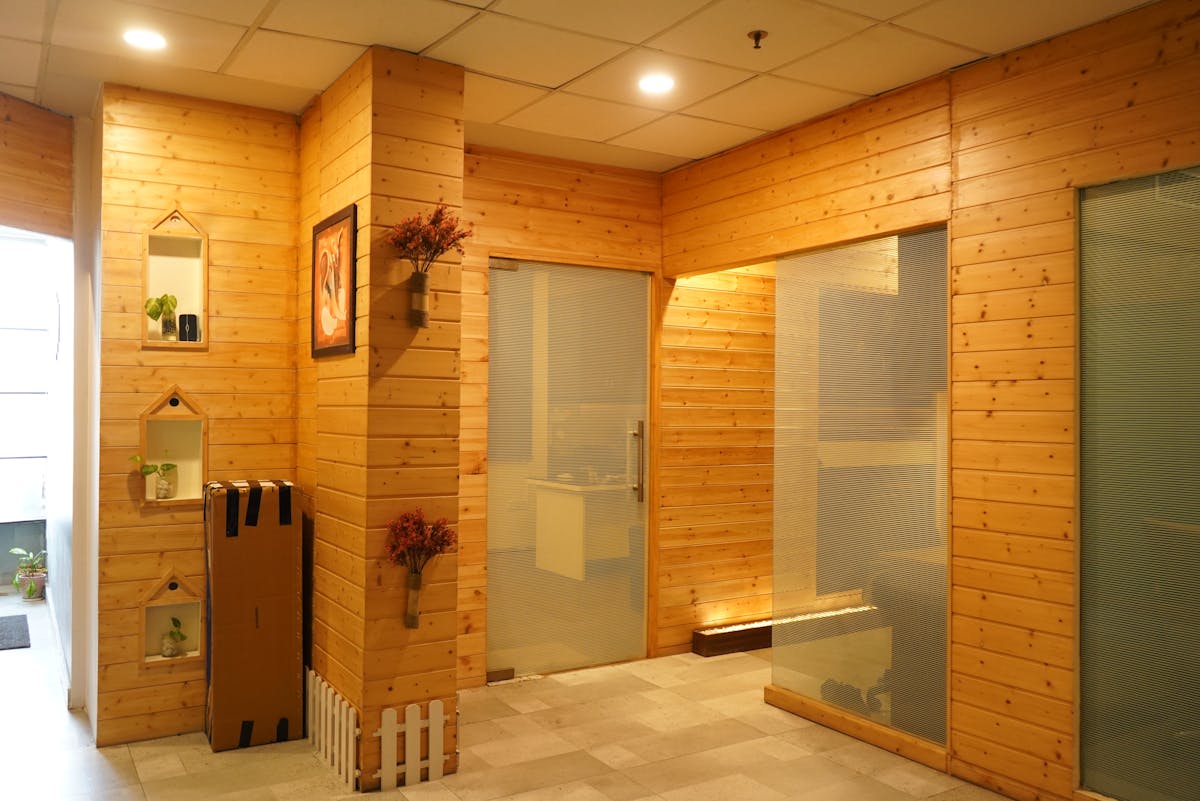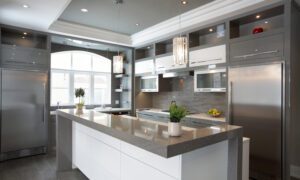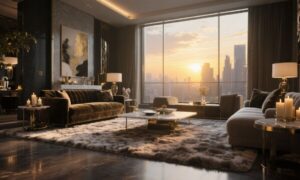Wall paneling has become an essential feature in modern interior design, offering both aesthetic appeal and practical benefits. Unlike plain painted walls, wall panels introduce texture, depth, and dimension, transforming a room from ordinary to striking. Whether for residential or commercial spaces, the right wall paneling solution can define the character of an interior, complementing furniture, flooring, and lighting to create a cohesive design. This article explores the types, benefits, and design considerations of wall paneling, helping homeowners and designers make informed decisions for modern interiors.
Understanding Wall Paneling
Wall paneling refers to covering a wall surface with panels made from various materials, including wood, MDF, PVC, and fabric. Panels can be installed in multiple ways, such as full-wall coverage, half-wall wainscoting, or as accent features. Beyond their visual appeal, wall panels serve functional purposes, including insulation, soundproofing, and protection against wear and tear.
Modern interior design often emphasizes minimalism, clean lines, and open spaces. Wall paneling aligns perfectly with these principles by offering structured patterns, sleek finishes, and subtle textures that enhance the overall ambiance without overwhelming the space. By choosing appropriate materials and designs, paneling can suit contemporary, industrial, rustic, or eclectic interiors.
Types of Wall Panels
There are several wall paneling options available, each bringing unique character and style to interiors. Understanding these options allows homeowners to select panels that complement their décor and functional needs.
Wood Panels
Wood wall panels are among the most popular choices due to their natural warmth and versatility. They can range from solid timber panels to engineered wood or veneer finishes. Wood panels offer various styles, including vertical slats, geometric patterns, and decorative moldings. They are ideal for living rooms, bedrooms, and offices where a cozy yet sophisticated atmosphere is desired. Wood also provides natural insulation and sound absorption, enhancing comfort in interior spaces.
MDF Panels
Medium-density fiberboard (MDF) panels are an economical and versatile option. They can be molded into intricate patterns, carved designs, or smooth surfaces that are easy to paint or stain. MDF panels are lightweight, durable, and resistant to warping, making them suitable for modern interiors where aesthetic flexibility and cost-effectiveness are priorities. These panels can be used as accent walls, ceiling features, or wainscoting to create a refined look without the expense of solid wood.
PVC Panels
PVC wall panels are made from durable plastic materials, offering water-resistant and low-maintenance properties. They are particularly suitable for areas prone to moisture, such as bathrooms, kitchens, or basements. PVC panels come in a wide range of textures, colors, and finishes, including wood-like or stone-inspired patterns. Their easy installation and cleaning make them a practical choice for contemporary homes seeking a stylish yet functional wall solution.
- Some WPC Wall Panel Design Tips For You From Everjade
- Wall Panel Store: Transform Your Space with Stylish and Durable Wall Panels
Fabric and Upholstered Panels
Fabric wall panels add softness, color, and acoustic benefits to interiors. These panels are often padded and upholstered with materials such as velvet, leather, or linen, creating a luxurious and comfortable ambiance. Fabric panels are ideal for bedrooms, home theaters, and offices where sound absorption and tactile appeal are important. They also provide opportunities for creative color schemes and custom designs that reflect personal style.
Stone and Tile Panels
For a dramatic and textured effect, stone or tile wall panels are an excellent choice. Natural stone, slate, marble, or ceramic tiles can be arranged as full walls or accent features, adding visual interest and a sense of permanence. Stone panels are durable, easy to clean, and suitable for high-traffic areas. They are particularly effective in creating statement walls, fireplace surrounds, or feature zones in living rooms and commercial spaces.
Benefits of Wall Paneling
Wall paneling offers several advantages beyond aesthetics, making it a practical and stylish addition to modern interiors.
Enhanced Aesthetic Appeal
The most immediate benefit of wall panels is their ability to enhance visual appeal. Panels introduce patterns, textures, and depth that paint or wallpaper alone cannot achieve. By incorporating wall paneling, designers can create focal points, highlight architectural features, or add subtle elegance to a room.
Improved Acoustics
Certain wall panels, especially fabric or wood panels, provide sound absorption benefits. This reduces echoes and noise transmission, making spaces such as home theaters, offices, or study areas more comfortable. Acoustic panels can be both functional and decorative, offering a solution that blends style with performance.
Durability and Protection
Wall panels protect walls from scratches, dents, and moisture. Wood and MDF panels shield surfaces in high-traffic areas, while PVC panels resist water damage in kitchens and bathrooms. Panels extend the lifespan of wall surfaces, reducing maintenance and repainting requirements over time.
Insulation and Energy Efficiency
Some wall paneling materials provide thermal insulation, helping to maintain consistent indoor temperatures. This can reduce reliance on heating and cooling systems, contributing to energy efficiency. Wood, MDF, and certain composite panels are particularly effective in adding an extra layer of insulation to interiors.
Design Flexibility
Wall paneling offers extensive design flexibility, allowing homeowners to mix and match materials, colors, and patterns. Panels can be installed horizontally, vertically, or in geometric arrangements, providing endless possibilities for customization. This flexibility enables designers to create unique interior statements that reflect personal taste and the overall theme of the space.
Installation and Maintenance
The installation process for wall panels varies depending on the material and design. Wood and MDF panels may require adhesives, nails, or screws, while PVC panels often feature interlocking systems for easier installation. Professional installation is recommended for complex designs or larger surfaces, ensuring a seamless finish.
Maintenance requirements depend on the panel material. Wood panels may need occasional polishing or varnishing, MDF panels can be cleaned with a damp cloth, and PVC panels are highly resistant to staining and water damage. Regular cleaning and care will preserve the appearance and functionality of wall panels for years.
Incorporating Wall Panels in Modern Interiors
To maximize the impact of wall paneling, consider its placement, color schemes, and complementary décor. Accent walls are a popular approach, allowing a single wall to stand out while maintaining balance in the room. Coordinating panel colors with furniture, flooring, and lighting creates a cohesive and harmonious design.
For small spaces, lighter-colored panels or vertical slats can make rooms appear taller and more open. In contrast, darker tones and textured panels add depth and warmth to larger rooms. Mixing materials, such as wood and fabric or stone and PVC, can create contrast and visual interest without overwhelming the space.
Trends in Wall Paneling
Modern interior trends favor simplicity, texture, and sustainability. Minimalist paneling with clean lines and subtle finishes is popular in contemporary homes. Textured or 3D panels provide a tactile and visual dimension, while eco-friendly materials such as bamboo, reclaimed wood, or recycled composites appeal to environmentally conscious consumers.
Metallic finishes, geometric patterns, and modular paneling systems are gaining popularity in commercial spaces, offering sleek and futuristic designs. These trends reflect a growing desire for wall solutions that combine aesthetics, functionality, and innovation.
Conclusion
Wall paneling is a versatile and effective solution for enhancing the character, depth, and style of modern interiors. From wood and MDF to PVC, fabric, and stone, each material offers unique benefits, enabling homeowners and designers to create spaces that are visually appealing, functional, and comfortable.
Beyond aesthetics, wall panels contribute to improved acoustics, durability, insulation, and protection, making them a practical choice for both residential and commercial applications. By carefully selecting materials, patterns, and installation techniques, interiors can be transformed into personalized environments that reflect taste and sophistication.
Whether creating accent walls, full-room coverage, or decorative features, wall paneling solutions offer endless possibilities for modern interior design. With thoughtful planning and attention to detail, wall panels can elevate any space, adding warmth, texture, and elegance that lasts for years.



































